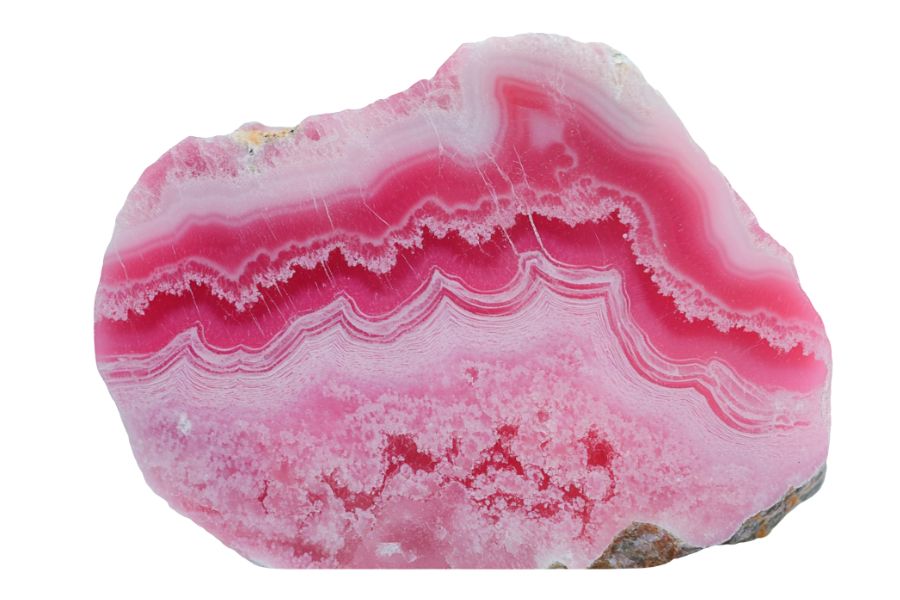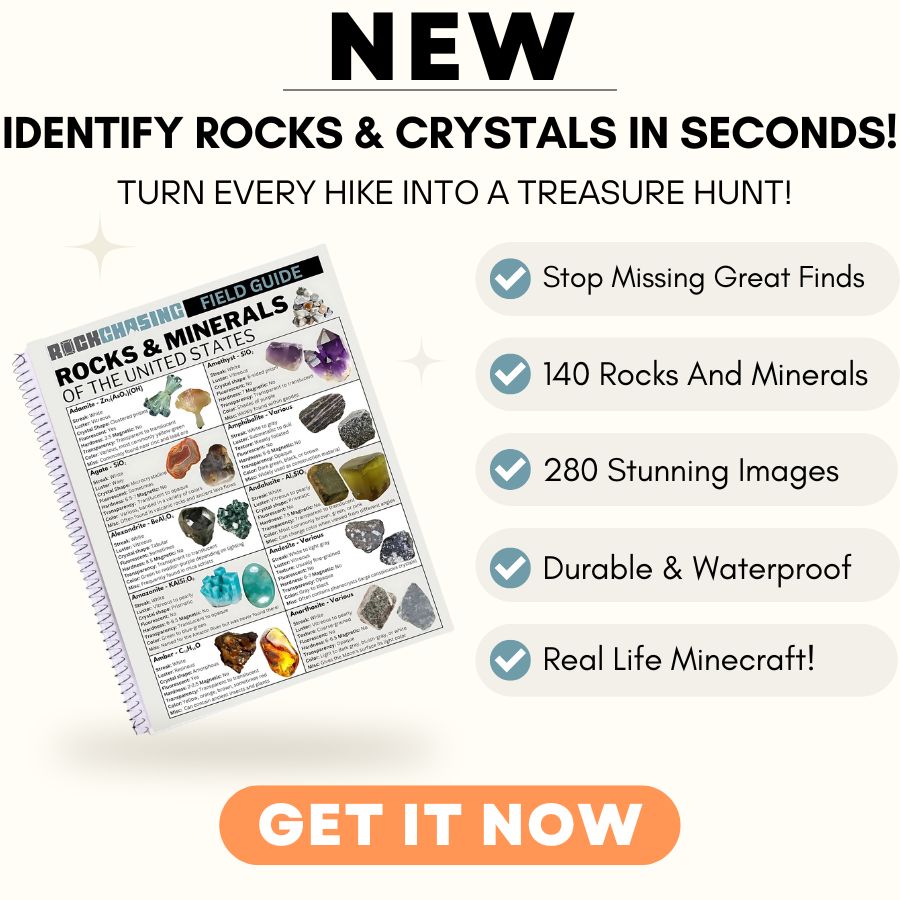Gold may have made California famous, but it’s not the only treasure hidden in its rugged landscapes. Tucked away in the state’s rocky hills and old mining sites, rhodochrosite glows with shades of deep pink and red, making it one of the most beautiful minerals you can find here.
Some of the best specimens in the country have been discovered in California’s mountains.
For those who know where to look, the state offers plenty of chances to uncover this stunning mineral. From rocky slopes to forgotten mine tailings, the thrill of the hunt makes finding rhodochrosite an adventure worth taking.
How Rhodochrosite Forms Here
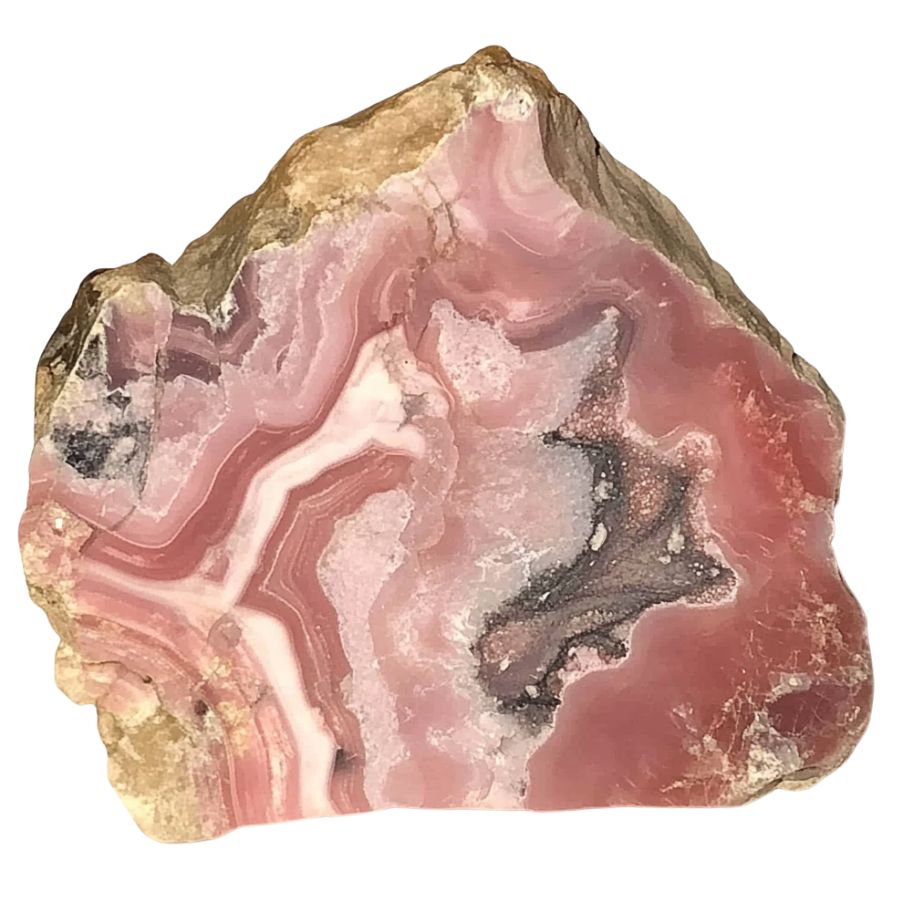
Rhodochrosite forms from manganese-rich waters seeping through cracks in rocks. When these mineral-heavy solutions mix with carbonate materials (like limestone), the magic happens!
Over time, as temperatures and pressures change deep underground, the manganese and carbonate ions come together and slowly crystallize. Sometimes, it forms in beautiful stalactites in empty spaces in rocks, while other times it shows up in hydrothermal veins alongside other minerals.
The most stunning specimens often form when the conditions are just right (not too hot, not too cold) letting the crystals grow slowly into those gorgeous pink rhombohedral shapes we love so much.
Types of Rhodochrosite
Rhodochrosite occurs in several distinct varieties. From delicate pink bands to deep crimson crystals, these variations showcase the diverse beauty of this remarkable mineral.
Pink Rhodochrosite
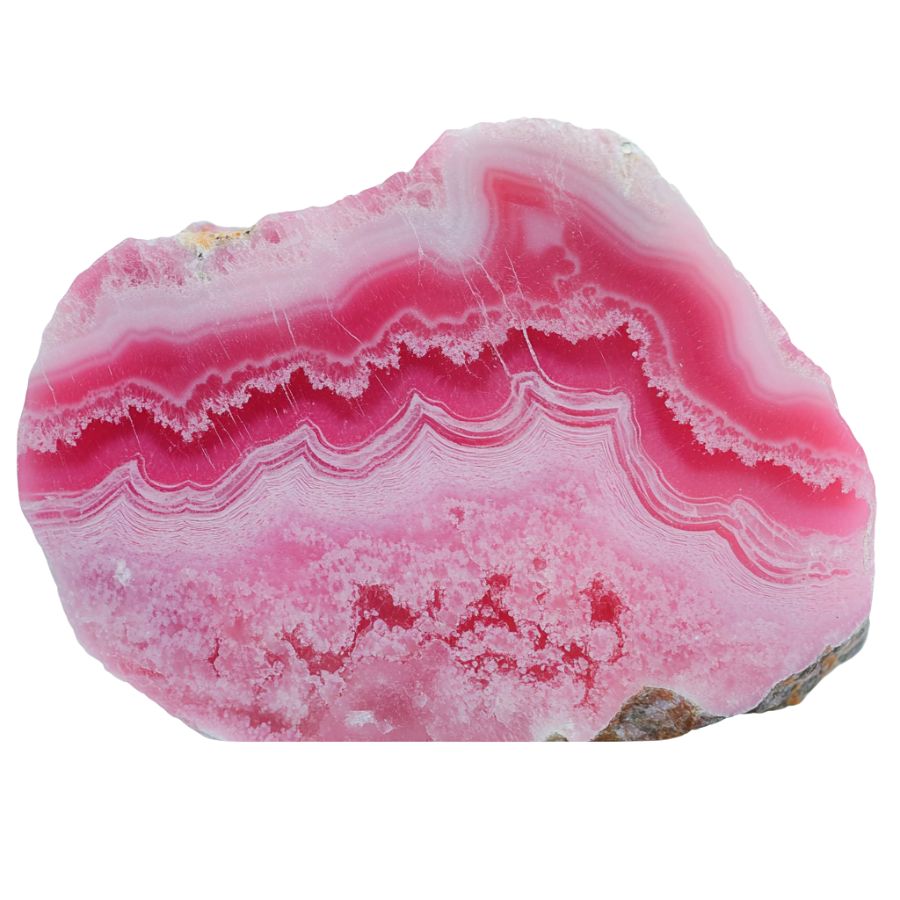
Pink Rhodochrosite displays delicate pink shades that range from soft pastel to deep rose pink. The stone features beautiful banding patterns that create swirling designs throughout its surface.
The translucent to semi-translucent nature of Pink Rhodochrosite adds to its visual appeal. This stone has a special trigonal crystal system that sometimes produces rare transparent crystals.
Fine specimens with clear, transparent crystals are particularly valuable. The best examples show sharp color zones and distinct banding patterns. Stone’s intricate patterns often resemble landscapes or abstract art.
Red Rhodochrosite
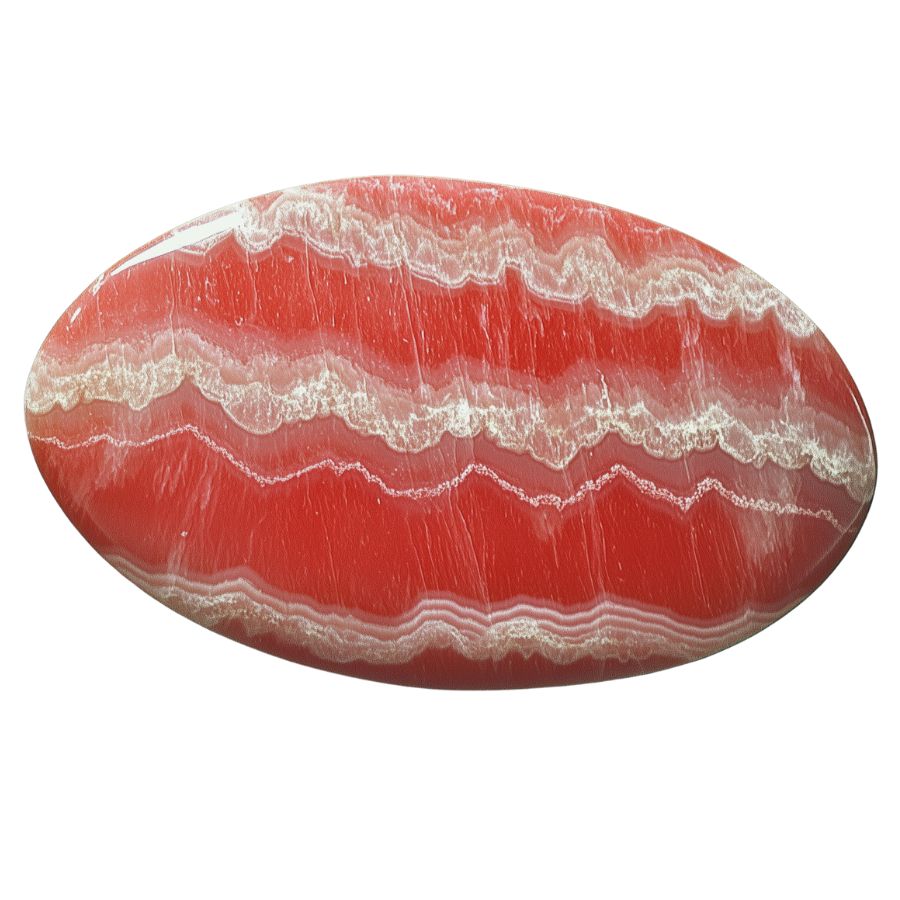
Red Rhodochrosite stands out with its bold, vibrant colors that range from bright red to deep crimson. Its intense red coloring comes from its high manganese content.
This variety can form in interesting shapes, including rhombohedral crystals and stalactite formations. When cut and polished, these formations reveal stunning internal patterns.
The crystal structure of Red Rhodochrosite allows it to form in large, well-defined specimens. These pieces often show sharp color transitions and clear crystal faces. The surface has a bright, glass-like shine when polished.
Some specimens feature dramatic color zoning, where deeper reds blend into lighter shades. This natural gradient effect makes each piece distinct and visually interesting.
Trapiche-like Rhodochrosite
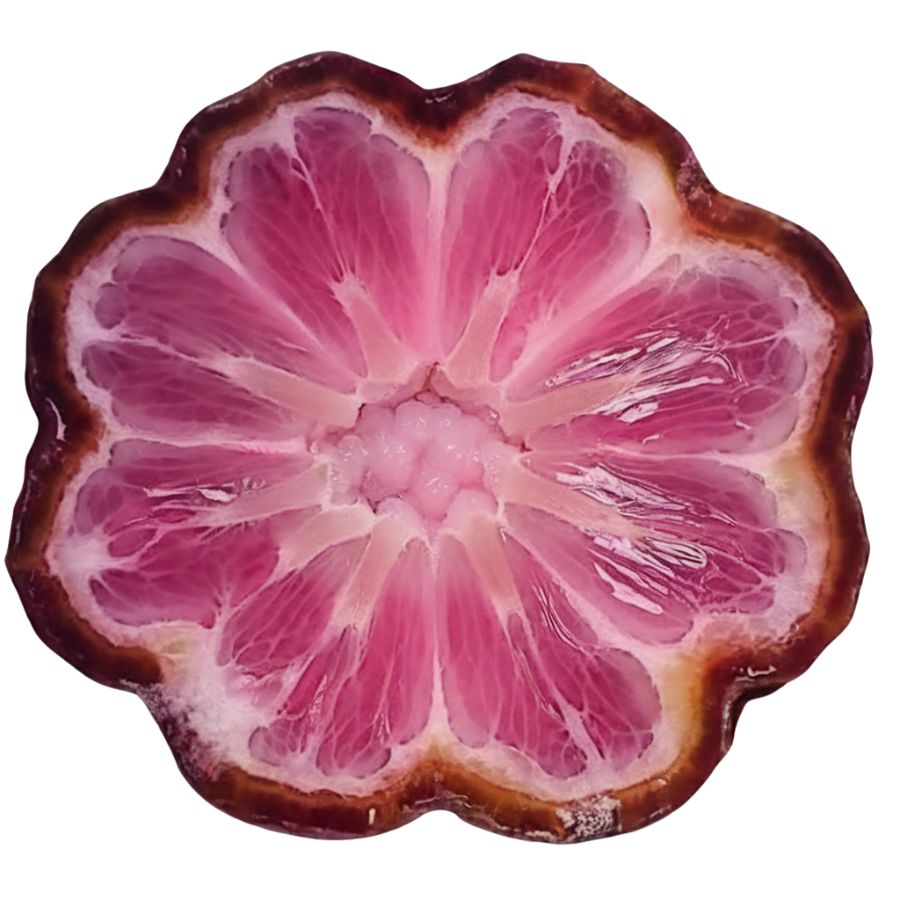
Trapiche-like Rhodochrosite showcases a remarkable star or flower-like pattern that makes it truly special. This pattern forms when crystals grow in a specific way, creating symmetrical rays that extend from the center. The result looks like a wheel with spokes or a blooming flower.
The formation process creates distinct sections within the crystal, each with its own character. These sections join at the center point, creating a natural geometric design.
When the stone is cut perpendicular to its main growth axis, its visual effect is enhanced. This orientation reveals the full beauty of the pattern and shows how the crystal sections fit together perfectly.
South African Rhodochrosite
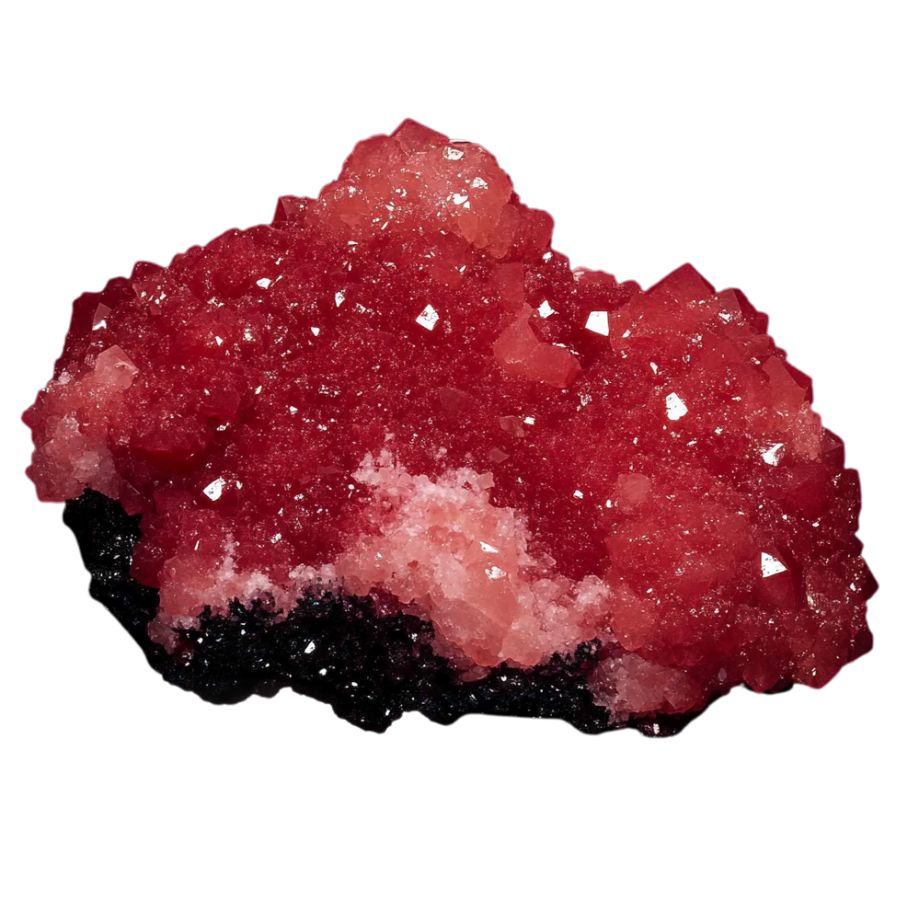
South African Rhodochrosite is known for its deep, rich blood-red color. This intense coloring sets it apart from other varieties. The stone often shows excellent clarity and depth of color which makes it particularly striking.
The internal structure of this variety creates interesting optical effects. When light passes through the stone, it can create a subtle glow that enhances its natural beauty. The crystal structure allows for excellent polish, bringing out the stone’s natural luster.
Many specimens show distinctive growth patterns that form during crystallization. These patterns can create interesting visual effects, from subtle color variations to dramatic geometric designs. The combination of deep color and natural patterning makes each piece unique.
Argentine Rhodochrosite
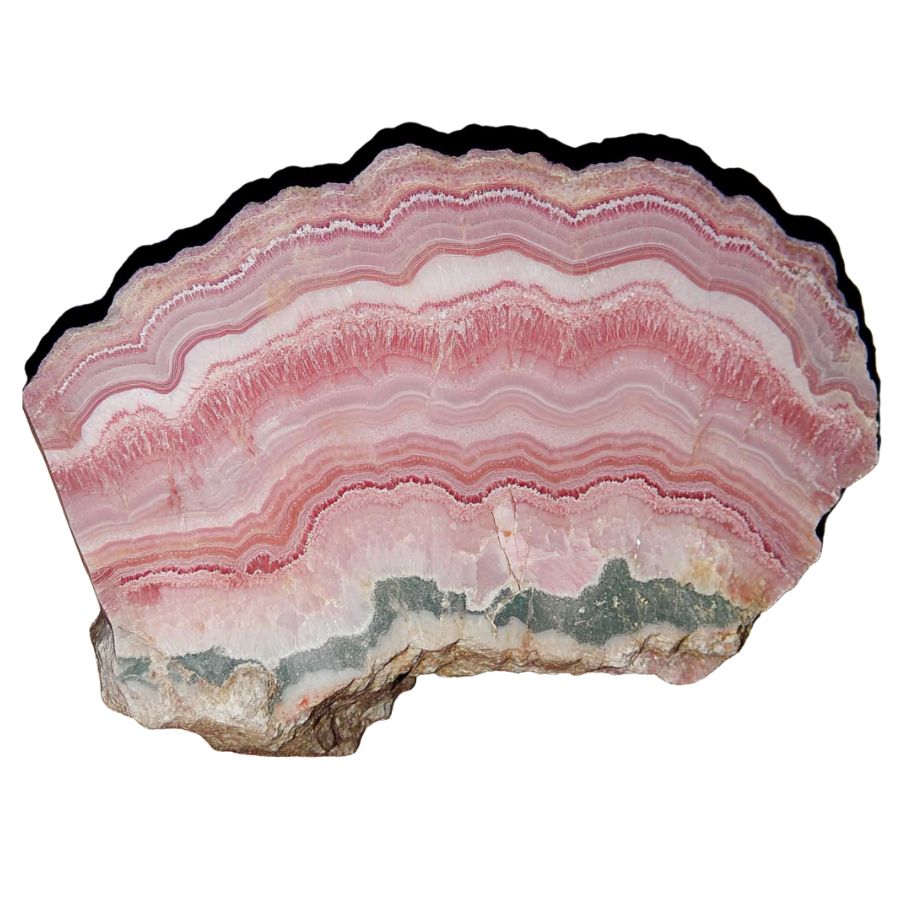
Natural bands of pink and white create stunning patterns across this remarkable stone. Delicate layering resembles fine marble artwork, making each piece unique. The colors shift between pale pink and deep red tones.
Historic significance adds to its charm as the “Inca Rose.” Ancient civilizations treasured these stones for their exceptional beauty. Many specimens show perfect crystal formations that catch and reflect light beautifully.
Exceptional purity sets Argentine specimens apart from others. Crystal formations often grow in perfect rhombohedral shapes. Traditional cutting methods reveal intricate internal patterns that collectors prize.
Colorado Red Rhodochrosite
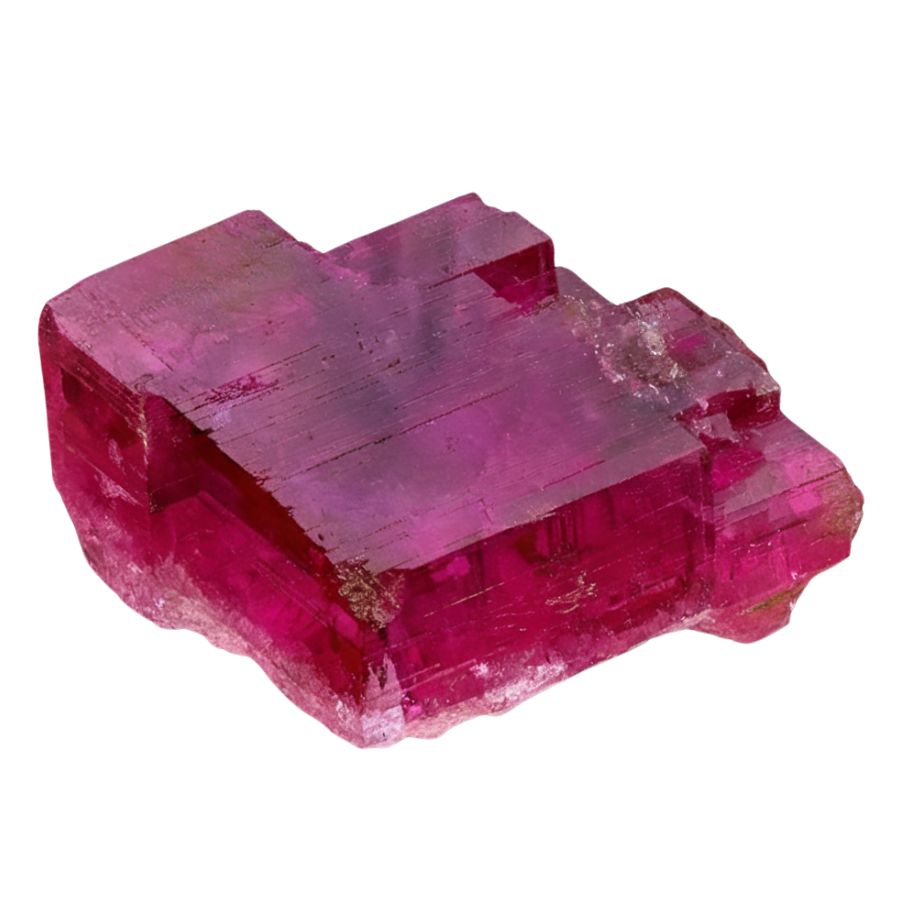
Brilliant rose-red colors distinguish this remarkable variety. Transparent specimens showcase exceptional clarity and fire. Natural light brings out deep crimson undertones that seem to glow from within.
Outstanding crystallization creates sharp, well-defined faces. Remarkable internal structures form during slow growth periods.
Superior brilliance makes these stones stand out in collections. Natural light reveals complex internal reflections. Fresh specimens maintain their vivid coloring over time. Special cutting techniques enhance the stone’s natural beauty.
Banded Rhodochrosite
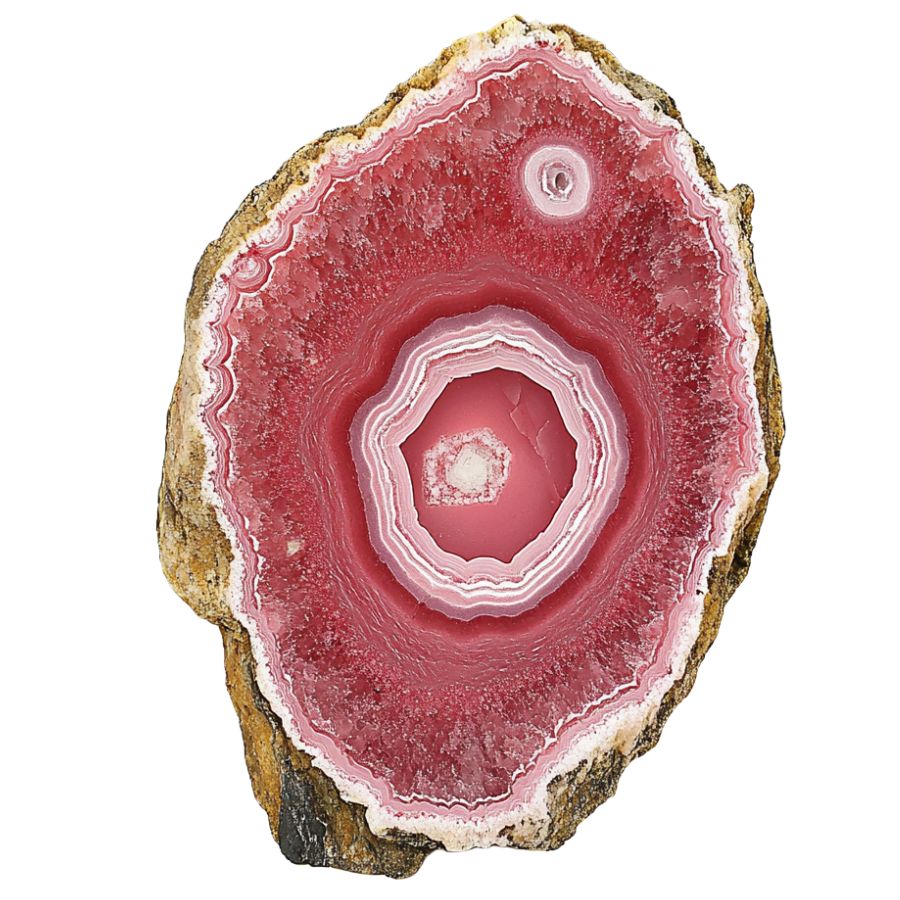
Concentric circles create fascinating patterns throughout this stone. Dramatic bands alternate between light and dark pink shades. Nature’s artistry reveals itself in each cross-section.
Perfect specimens form when mineral-rich water drips slowly over time. Natural processes create stalactite formations with distinct ring patterns.
Multiple layers build up over time to create unique patterns. Natural variation ensures no two pieces look exactly alike. Perfect cross-sections show complete circular patterns.
Peruvian Rhodochrosite

Peruvian Rhodochrosite exhibits a unique blend of pink tones with distinctive crystalline qualities. These stones often develop with exceptional clarity and a glass-like shine.
Crystal formation in these specimens tends to create angular patterns rather than rounded bands. This geometric growth pattern results in fascinating internal architectures that catch and reflect light in unique ways.
The combination of clarity and internal patterns makes these stones particularly fascinating under magnification. Collectors can observe minute details of crystal growth and formation that provide insights into the stone’s development process.
What Does Rough Rhodochrosite Look Like?
Rhodochrosite in its rough form can be tricky to spot, but once you know what to look for, it’s quite distinctive. Here’s how to recognize Rhodochrosite in its natural state.
Look for the Signature Pink-to-Red Color Range
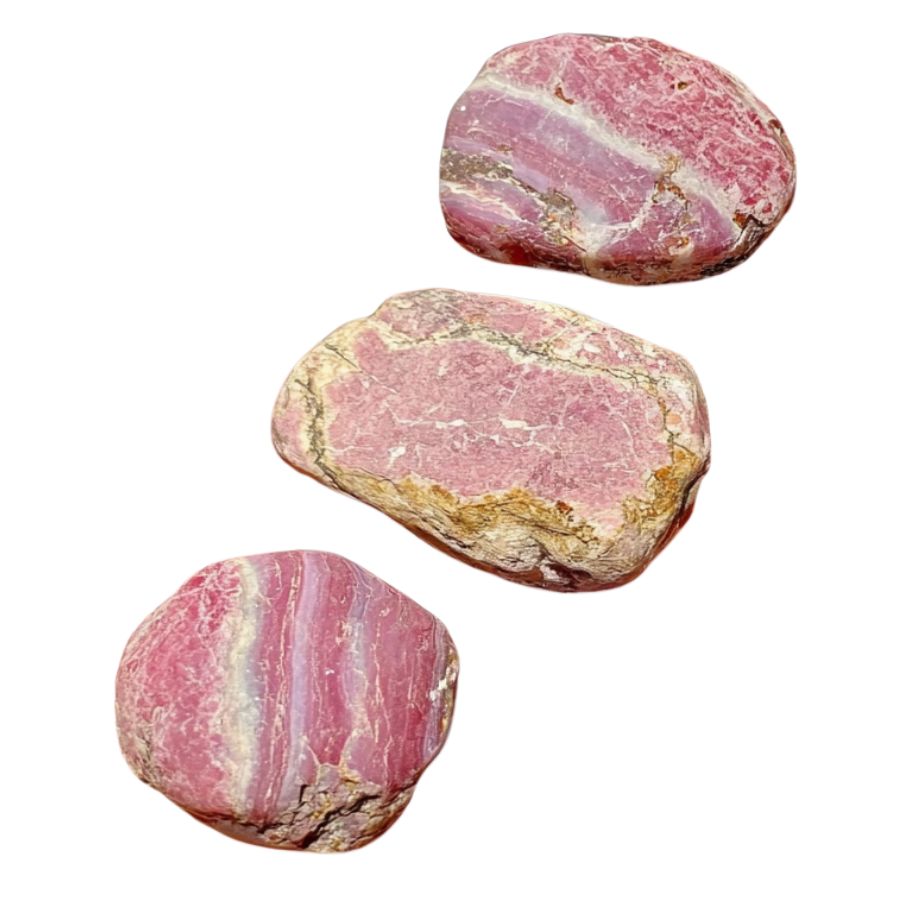
The most obvious telltale sign is its color – typically a warm, rosy pink to deep red. But here’s the thing: it’s not just one solid color. You’ll often spot subtle bands or zones of different pink shades.
Sometimes, you might see hints of brown or even light orange. Don’t dismiss it if it’s not perfectly pink – natural rhodochrosite can be surprisingly varied. The deeper, more saturated reds usually indicate higher-quality specimens.
Check for the Distinctive Crystal Structure

Unlike many minerals, rough rhodochrosite often forms in rhombohedral crystals. Look for angular edges and faces that meet at about 73 degrees. Sometimes you’ll find it in curved, saddle-shaped crystals (super unique!).
The crystals can be transparent to translucent, and they might appear in clusters or as individual specimens.
Examine the Surface Texture and Patterns
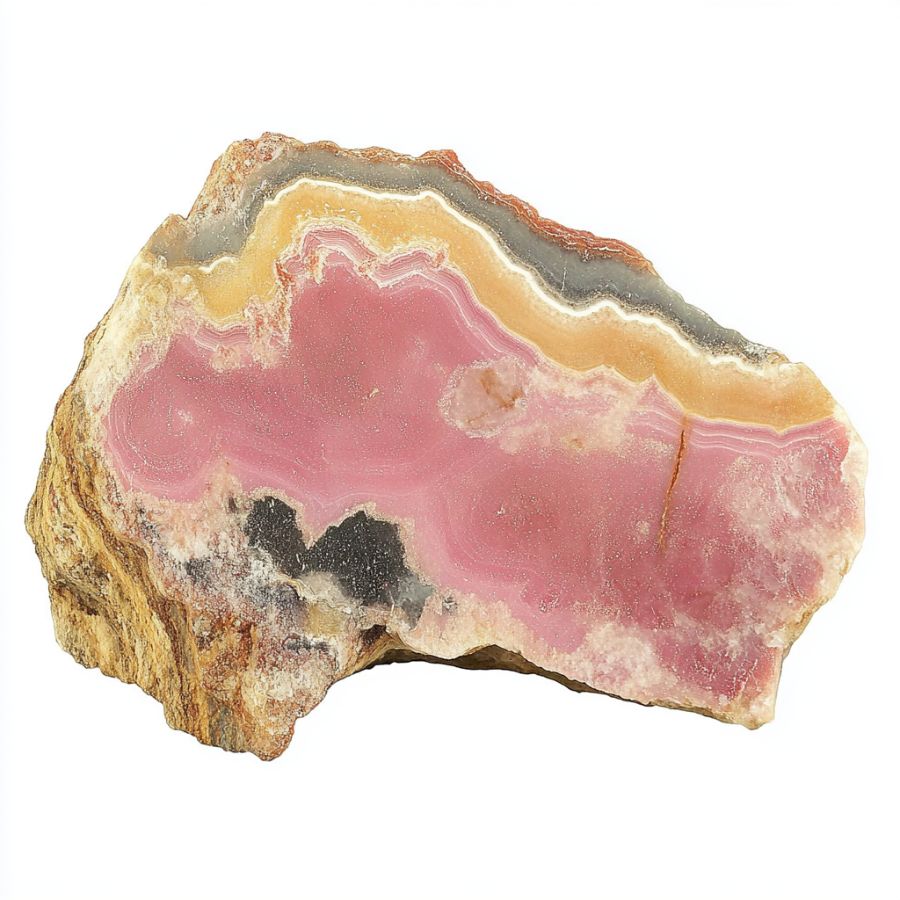
Run your fingers over the surface – rhodochrosite typically has a pearly to vitreous (glass-like) luster. Fresh breaks will show this best.
You might notice concentric banding patterns, especially in massive specimens. These bands often alternate between lighter and darker shades of pink. The surface might feel slightly smooth but not quite as glassy as quartz.
Test the Hardness and Fragility
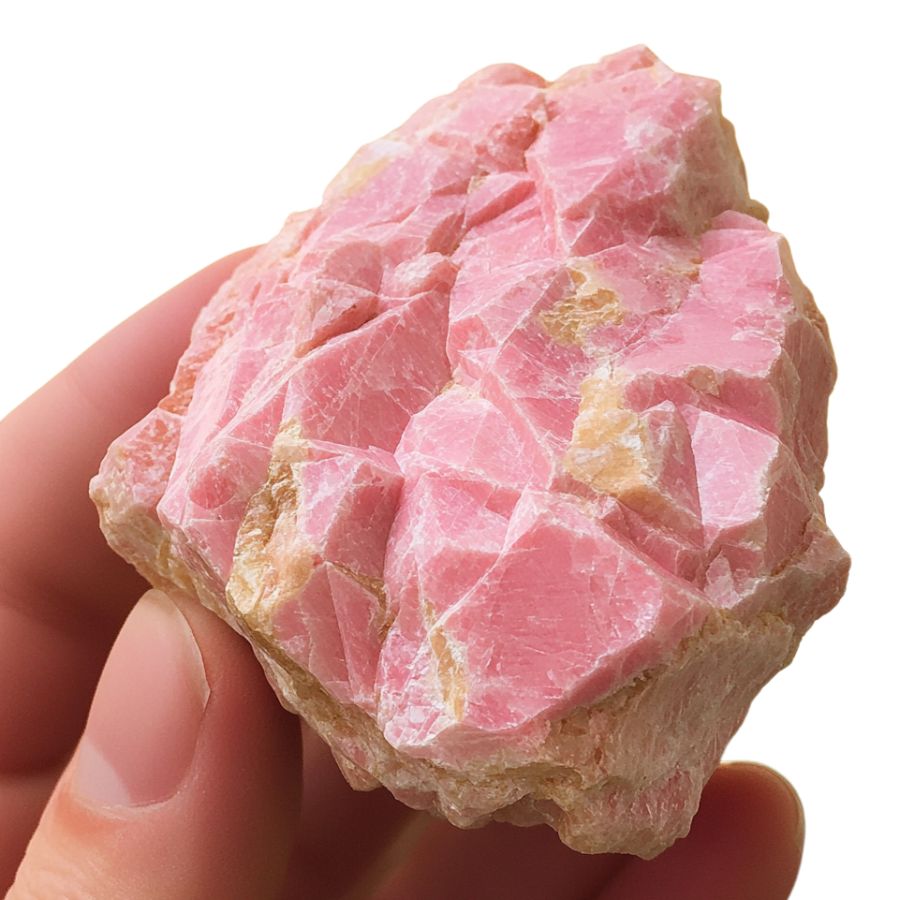
Here’s a crucial tip: rhodochrosite is relatively soft (3.5-4 on the Mohs scale). Try scratching it gently with a copper penny – if it scratches easily, you might have rhodochrosite.
Be gentle though! It’s pretty delicate and can break along cleavage planes. This softness and brittleness help distinguish it from similar-looking minerals like rose quartz, which is much harder.
A Quick Request About Collecting
Always Confirm Access and Collection Rules!
Before heading out to any of the locations on our list you need to confirm access requirements and collection rules for both public and private locations directly with the location. We haven’t personally verified every location and the access requirements and collection rules often change without notice.
Many of the locations we mention will not allow collecting but are still great places for those who love to find beautiful rocks and minerals in the wild without keeping them. We also can’t guarantee you will find anything in these locations since they are constantly changing.
Always get updated information directly from the source ahead of time to ensure responsible rockhounding. If you want even more current options it’s always a good idea to contact local rock and mineral clubs and groups
Tips on Where to Look
Rhodochrosite is a pink to rose-red mineral that often forms in veins and cavities. Here’s where you can typically find this beautiful stone while rockhounding in accessible locations across the US.
Abandoned Mine Areas

Old mines are great spots to find rhodochrosite. Check the mine dumps and tailings piles where miners discarded unwanted material. These areas often contain smaller pieces that weren’t commercially valuable but are perfect for collectors.
Look for pink-colored rocks in manganese-rich waste piles. The stone frequently appears alongside black manganese minerals, which can serve as a helpful indicator when searching.
Sometimes, you might get lucky and find specimens with beautiful banding patterns that were overlooked during mining operations.
Sedimentary Rock Formations
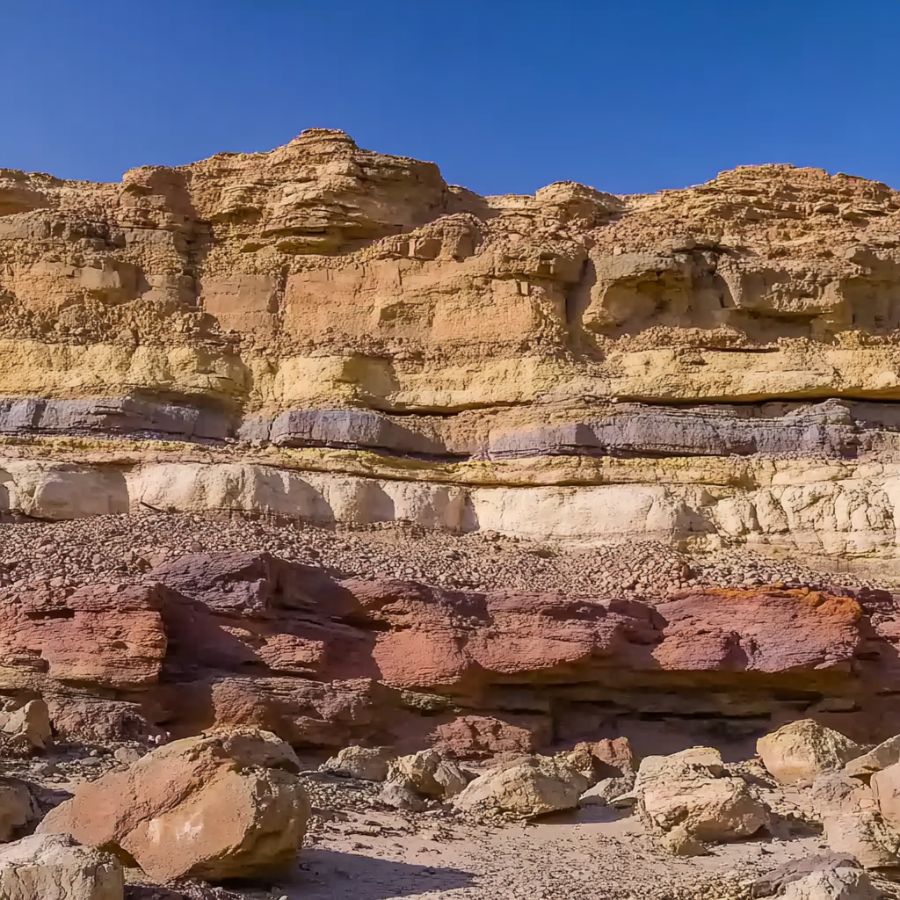
Many sedimentary rocks, especially those containing lots of manganese and calcium carbonate, can host rhodochrosite. Look for areas where limestone and dolomite are common. The stone often forms in the cracks and spaces between these rocks.
While exploring these formations, pay special attention to areas where water has carved out natural exposures, as these spots might reveal hidden rhodochrosite deposits that have been naturally weathered out over time.
Mountain Stream Beds

Stream beds in mountainous regions are excellent places to search. Focus on areas where the water has cut through manganese-rich rock formations, as the stream’s natural tumbling action often exposes and smooths rhodochrosite pieces.
During your search, concentrate on spots where the water slows down and creates natural collection points, such as behind large boulders or in quiet pools, because these areas tend to accumulate heavier minerals including rhodochrosite fragments that have broken free from their original source.
Some Great Places To Start
Here are some of the better places in the state to start looking for Rhodochrosite:
Always Confirm Access and Collection Rules!
Before heading out to any of the locations on our list you need to confirm access requirements and collection rules for both public and private locations directly with the location. We haven’t personally verified every location and the access requirements and collection rules often change without notice.
Many of the locations we mention will not allow collecting but are still great places for those who love to find beautiful rocks and minerals in the wild without keeping them. We also can’t guarantee you will find anything in these locations since they are constantly changing.
Always get updated information directly from the source ahead of time to ensure responsible rockhounding. If you want even more current options it’s always a good idea to contact local rock and mineral clubs and groups
Santa Lucia Mountains

Santa Lucia Mountains run along California’s central coast from Carmel to the Cuyama River. These mountains stand tall next to the Pacific Ocean, creating a stunning sight for visitors. The area has a rich history of rhodochrosite discoveries among its rocky slopes.
Rockhounds can find rhodochrosite in several spots throughout the range. The Ventana Wilderness area shows promise for mineral hunting.
Many collectors have success searching near stream beds where water has exposed mineral deposits. Natural erosion in the steep canyons often reveals hidden crystal pockets.
The area’s unique geology makes it perfect for mineral formation. Hot water once moved through cracks in the rocks, leaving behind beautiful pink rhodochrosite crystals. Today, these crystals can sometimes be found where older rock layers are exposed.
Leech Lake Mountain

Leech Lake Mountain stands at 6,598 feet in Mendocino County. This peak is part of the Northwest U.S. Coast Ranges and sits near Dewell Garden and Reeves Place.
The mountain’s rocks formed from an ancient process where one piece of Earth’s crust pushed under another. This created special conditions that made different types of minerals. The mountain contains many cracks filled with minerals from hot water that once flowed through the rocks.
Rhodochrosite appears in these mineral-filled cracks along with other minerals like sphalerite and fluorite. Rock collectors often find good samples in old mining areas on the mountain.
Bereton Mine

Located about 3 miles west of Sherburns, Bereton Mine is a former manganese mine that has become a notable spot for finding rhodochrosite. Pink rhodochrosite crystals hide within the old manganese-rich veins of the mine.
These beautiful stones formed millions of years ago when mineral-rich waters flowed through the rock cracks. The deeper parts of the mine contain the most promising spots for finding rhodochrosite specimens.
Looking around the old mining areas, collectors often spot rhodochrosite’s distinctive pink color mixed with dark manganese minerals. The best specimens typically appear in spots where the manganese ore is most concentrated.
Clark Mountain Range
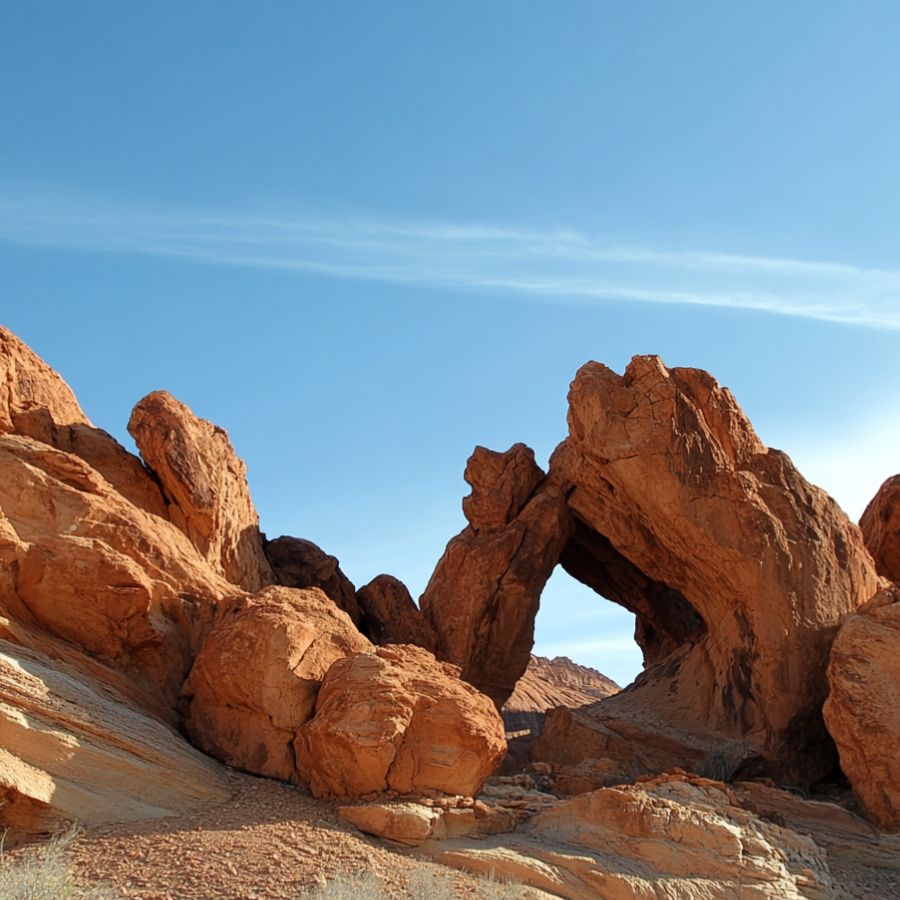
Clark Mountain Range is located just north of Interstate 15. This mountain range sits partly inside the Mojave National Preserve and reaches close to the Nevada border. Clark Mountain, the highest point, rises to 7,929 feet above sea level.
Rhodochrosite hunters head to the Mohawk Mine area on Mohawk Hill. This spot is famous among mineral collectors because of its rich deposits.
The mountain range has different types of rocks that make it perfect for finding minerals. You can see limestone and dolomite in the middle part, quartzite in the west, and granite and gneiss in the east.
The area is special because it contains rare earth elements along with rhodochrosite. Mining activities in the past have made some areas easier to search for minerals.
Klamath Mountains
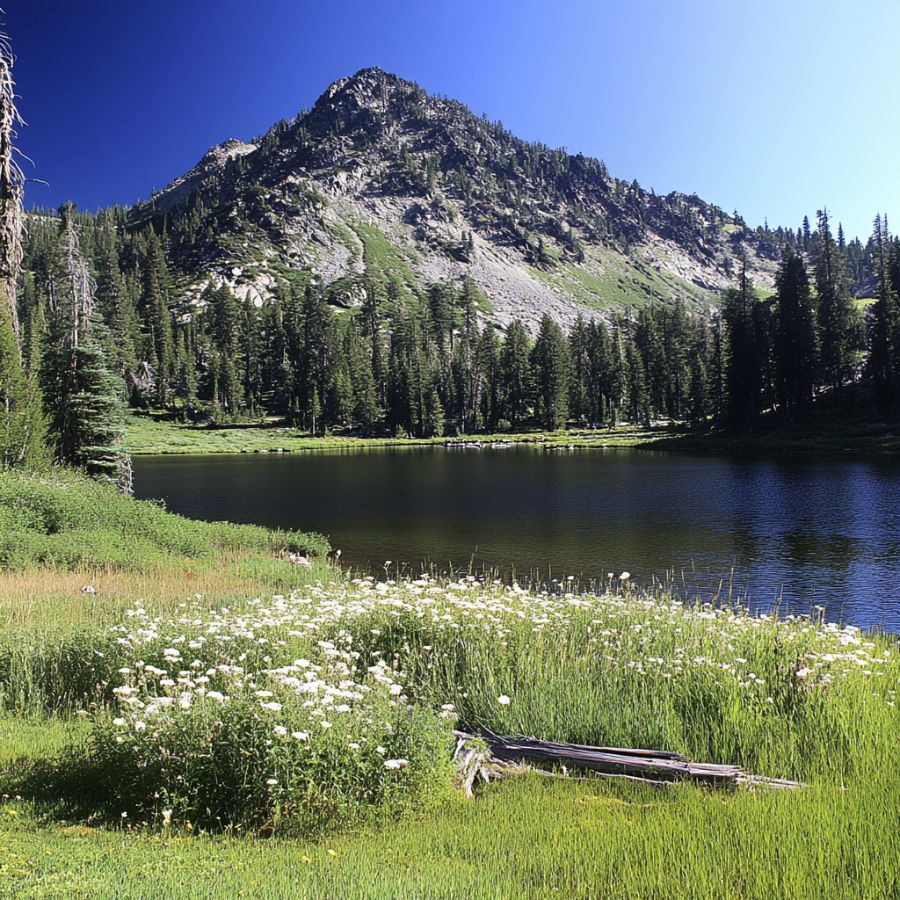
The Klamath Mountains stretch across northwestern California and southwestern Oregon for about 250 miles. These mountains are not as well-known as other California ranges, but they hold special treasures for rockhounds. Pink rhodochrosite crystals hide in the mountain’s rocky slopes and valleys.
Deep within these mountains, you’ll find a mix of different rocks formed millions of years ago. The mountains rise from near sea level to heights of 9,000 feet. Layers of marble and serpentine rock make this place special for finding minerals.
Many rockhounds head to the Stewart Springs area and Mount Eddy in Siskiyou County to search for rhodochrosite. These spots are known for their rich mineral deposits. The mountain’s unique mix of rocks creates perfect spots where rhodochrosite can form.
Places Rhodochrosite has been found by County
After discussing our top picks, we wanted to discuss the other places on our list. Below is a list of the additional locations along with a breakdown of each place by county.
| County | Location |
| Alameda | Livermore Mining District |
| Alameda | Arroyo Mocho Road occurrence |
| Alameda | Nelson Bailey Mine |
| Alameda | Chaney Winship-Doak Mine |
| Amador | Lubanko prospect |
| Humboldt | Fort Seward Mine |
| Humboldt | Point Delgada |
| Humboldt | Locality No. 2 |
| Kern | Rio Tinto Borax Mine |
| Kern | Rio Tinto Borax open pit |
| Kern | Manganese Queen Mine |
| Madera | Agnew Meadow Mine |
| Marin | Mazza prospect |
| Mendocino | Linser Mine |
| Mendocino | Nowlin Mine |
| Mendocino | Foster Mountain Mine |
| Mendocino | Mount Sanhedrin deposits |
| Mendocino | M. G. Morrison prospect |
| Mendocino | Wild Devil Mine |
| Mendocino | Brereton deposit |
| Mendocino | Long Mine |
| Mendocino | South Thomas Mine |
| Mendocino | Thomas Mine |
| Mendocino | Pine Mountain prospect |
| Monterey | Evans Manganese prospect |
| Napa | Cavagnaro prospect |
| Nevada | Smith Mine |
| Nevada | Manga-Chrome Mine |
| Placer | Placer |
| San Benito | Hendricks Mine |
| San Bernardino | Mohawk Mine |
| San Bernardino | White Knob Quarry |
| San Bernardino | Sagamore Mine |
| San Joaquin | Fabian Mine |
| San Joaquin | Ladd Mine |
| San Joaquin | Scott prospect |
| San Luis Obispo | Staneuche Mine |
| San Luis Obispo | O’Connor Ranch deposits |
| San Luis Obispo | Hearst Ranch-Marmolejo Creek deposit |
| Santa Clara | Great Expectation Mine |
| Santa Clara | Pennsylvania Mine |
| Santa Clara | Miller Ranch occurrence |
| Stanislaus | Buckeye Mine |
| Trinity | Double-A prospect |
| Trinity | Red Cliff prospect |

